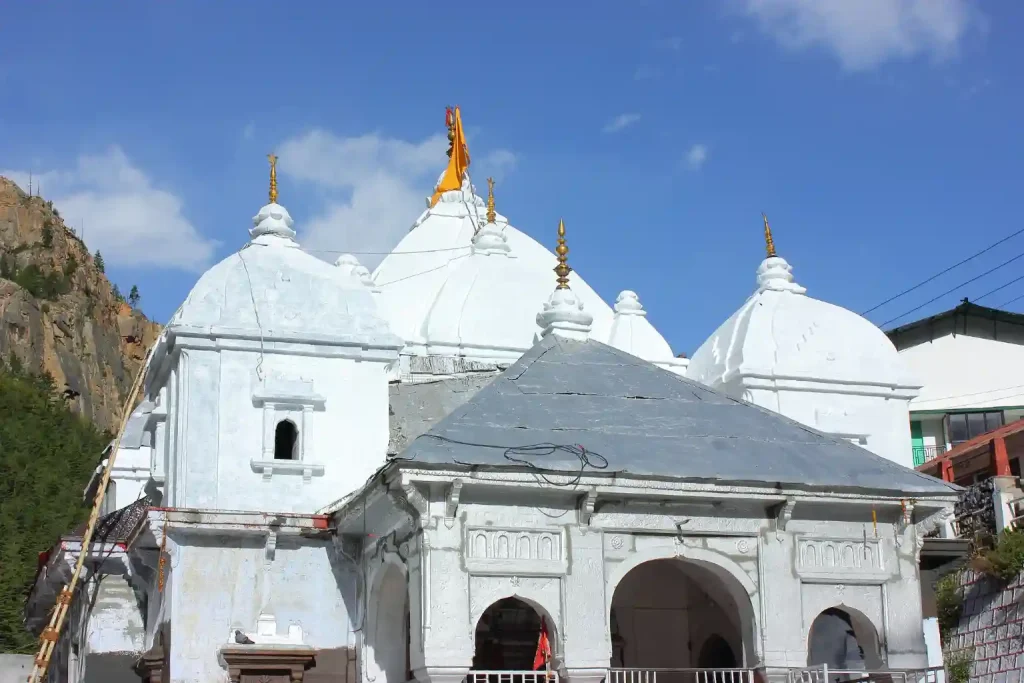
Yamunotri is a beautiful and sacred site in Garhwal Himalayas, well known for the temple, the glacier, and the source of the River Yamuna. Weather in Yamunotri affects not just the trip and visit experience but daily life for the residents or temporary visitors.
In this piece I would like to take notes regarding what the weather in Yamunotri is like seasonally, what you can expect on a daily basis, advice in case you do plan to go there, and how the climate influences life there. If you are planning a spiritual journey, you can also visit our tour packages like Chardham Yatra by Helicopter and Do Dham Yatra.
Where is Yamunotri—altitude and geography
Familiarity with the weather in Yamunotri starts with awareness of some common facts. It is a sacred dham located within the district of Uttarkashi of the state Uttarakhand in the higher Himalayas. It is about 3,290–3,300 meters from sea level that the temple is situated, but the source of the river Yamuna is higher up, on the Champasar glacier, at about 4,421 meters.
Because of such an increase and hilly land, weather in Yamunotri is virtually chillier than for the plains throughout the year, typically varying erratically, with standard fluctuations, harsh nighttime chill, and possibility for rainfall, snowfall, or sunshine to fluctuate seasonally.
Yamunotri daily weather
Here are a few typical trends you can expect for daily weather in Yamunotri.
- Temperatures: Yamunotri day temperatures, even on bright sun days, are usually cool or moderate—normally 10-20°C during summer and much lower at night. Yamunotri night temperatures come down to very low temperatures, even close to zero in winter.
- Rain and snow: Yamunotri receives rain during monsoon (July-August), but with occasional thunderstorms or late monsoons. Snowfall may occur at other destinations during winter.
- Cloud cover and humidity: Quite humid fairly often in wet times with lots of cloudiness. In the dry spells, days are clearer, but nights are cold.
- Wind and UV: Wind is harsh, particularly at higher elevations. UV radiation is more powerful in the air of mountains when the sun is shining, so while cool, the sun may be intense.
Seasonal breakdown of weather in Yamunotri
Let’s see how the weather in Yamunotri fluctuates in a year.
| Season | Months | Weather in Yamunotri | What you can expect / caution |
| Winter | November → March / April | Extremely cold, heavy snow, frosts, nights generally well below freezing, snow on trails, temple closed for safety / pilgrimage. | Travel is challenging; only seasoned trekkers or locals get through. Warm gear and snow equipment are a must. Remain informed about weather alerts. |
| Spring | April → May | Weather gets warm, snow thaws, pleasant days, nights still cold. Likelihood of isolated showers. Yamunotri temple is accessible now (typically during Akshaya Tritiya) as snow dissipates. | Reasonable time to visit; daylight is powerful; morning and night are still chilly. Wear layers. |
| Summer / Pre-Monsoon | June → mid-July | Mild in the daytime, cold in the night. June is typically one of the best months: clear weather, quite pleasant weather for trekking or pilgrimage. | Best time. But after monsoon starts, it is less reliable. |
| Monsoon | Mid-July → August | Rain, heavy rain, scattered thunderstorms; possibility of landslides; cloud cover; slippery roads. Yamunotri weather is wet and even risky. | Travel becomes impacted. Trekking routes can be closed; roads can be blocked. Not so good for light-hearted tourists. |
| Post-Monsoon / Autumn | September → early November | Weather in Yamunotri becomes better. Days are nice, nights are becoming cold. Cloud cover decreases. Great views as clouds evaporate. Most pilgrims like this time. | A great time. Nights get very cold as November approaches. Weather might become unseasonal, so keep watchful. |
How weather in Yamunotri impacts tourists and pilgrims
Weather in Yamunotri is not only a background; it actually impacts.
- Temple opening/closing: Due to snowfall during winter, Yamunotri Temple is open from late April till mid-November (or till snowfall starts during winter).
- Trekking safety: Yamunotri trails, via a spot known as Hanuman Chatti or Janki Chatti, or any other routes, are unsafe in rain or snow. Rain, mud, slippery stones, and landslip danger.
- Attire and equipment: Nights are chilly even in summer; woolens are a must. Waterproof items, decent monsoon boots. Sun protection on clear days. Layering is advisable.
- Transport and accessibility: Roads can be destroyed or rendered unusable, and routes become dangerous. Infrastructure comes under damage. Isolation of Yamunotri implies delay is probable.
Travel planning tips as per climate in Yamunotri
In case you are planning to travel to Yamunotri, here’s some advice based on weather:
- The latest predictions should be verified just before you are going to start. Yamunotri weather is capricious.
- Travel in late spring (April-May) or fall (September-October), if possible—the best, ideal times.
- Travel during monsoon (July-August) and rain; mud, slippery paths, and likely disruption or even cancellation are to be expected.
- Wear warm clothes even during summer travel—fleece, wool, windproof layer. Night becomes chilly.
- Rain gear: pack raincoat, good shoes with grip, possible trekking poles.
- In the event altitude sickness is a possibility, keep in mind that the height of Yamunotri is really great—stay well-hydrated, climb slowly.
- Pay attention to daylight: winter and rainy season days are shorter. Schedule trekking or pilgrimage segments during daylight.
Why Yamunotri weather can be magical
Despite the ruggedness, Yamunotri weather also holds its own magic. Some of the reasons why:
- The bounce of warm sun on cold mountain air seems to come alive.
- Misty mornings with clouds opening to let the sun peek above ridges, white ridges in sight.
- Gliding streams and clouds rolling in, particularly monsoons, adding drama and mood.
- Snow in winter renders the place a quiet white shroud—quite pretty, though difficult.
Possible hazards and safety
Weather in Yamunotri is hazardous. Some to be careful about:
- Landslides or road obstruction when rains are heavy during monsoon. Yamunotri trekking routes are said to get slippery or choked.
- Abraser weather plunges: surprise drops in temperature, particularly overnight or during cloud cover over the sun.
- Snowstorms or unexpected surprise snow during shoulder seasons (early fall, early spring).
- Altitude concerns: cold thin air, sun exposure.
So it’s nice to watch out for predictions, travel with a buffer day or two if possible, and warn others of travel schedule.
Summary: What the Yamunotri climate can teach us
Finally, the Yamunotri climate is:
- Cool to cold most of the year, especially at night.
- Monsoon—slowest in summer; snow in winter.
- Pleasant during spring and autumn.
- Variable—sunny one moment, cloudy or rainy another.
If you are ready in advance, well prepared, respectful of the mountains, then Yamunotri weather is no deterrent but a part of an enriching, spiritual experience.


